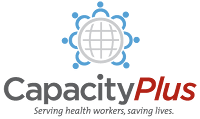Review: Role of Networking in Managing Migration of Human Resources for Health in the Philippines
General comments
This is a descriptive study of the organizational effectiveness of the new Human Resources for Health (HRH) Network in the Philippines that has been established to oversee and coordinate HRH development. It is a subjective analysis, although the writer uses a set of variables and performance indicators, against which to measure organizational effectiveness. The paper is not easy to read as it contains a lot of densely packed information with many acronyms. If the reader is unfamiliar with the Philippine systems it interrupts the flow of reading and understanding to have to sort out what they mean.
Nevertheless, it is an interesting account of one country’s attempts to coordinate and control the health labor market at a high level of decision making. Indeed, in the Philippines there are many agencies involved in HRH – perhaps more than average – so that this initiative would be easier to implement in other countries. High level coordination of HRH policies and planning is certainly an example of good practice in the area of HRH development.
The author suggests that migration 'exemplifies the existing HRH problems', but this is somewhat misleading. The Philippines has always had a policy of over-production of health workers (and other workers too) for migration. What has recently changed is that doctors are retraining as nurses in order to migrate to the USA for higher salaries. This has left the health sector short of physicians, especially in the least popular rural areas. The author does not address issues of exactly how migration can be affected by the HRH Network, though it is one of the outcome indicators in the framework to evaluate organizational effectiveness. She states that it is too early in the process to do this. While this is probably true, it would be a stronger paper if the retention mechanisms that can be facilitated by the HRH network were articulated and backed by evidence.
Migration issues
There is much written about migration issues in the Philippines, and perhaps too much to be reviewed in this paper. The section reviewing migration is actually more focused on the migration of physicians, and the under-production of nurses (the best of whom migrate). In addressing HRH problems it is important to make a distinction between policies and planning for retention and for recruitment, because the strategies might be different. Cuneta does show the model used by the HRH Network, which actually makes this distinction, but she doesn’t make it in the migration section. The problem with nursing as described here is that less than 50% pass the Nursing Board examinations: this is a huge issue in itself, and prompts me to ask why, what could be done about it and what happens to those who do not pass? Do they re-sit? It would be interesting to know more about this, and how the HRHG Network worked on this issue.
HRH Development in the Philippines
This is a comprehensive section that details the many players involved in HRH issues. The chief problem comes across as lack of coordination of initiatives, rather than lack of interest in them. What is not discussed is the possible beneficial effects for the health labor force of having competition in the country. Apparently this does not apply in the Philippines, and again the question is: why not? Are salaries so low that even with competition they cannot compete with the US? Do health workers get a living wage? And what are the benefits?
Establishing the HRH Network
These sections are well done, describing in some detail how the HRH Network was established, and why, who is in it and what it does. Funding for the activities of the Network are mentioned briefly, and Cuneta points out that funding is a weakness of the initiative because it is difficult to mobilize it, due to 'usual government procedures'. But as she also points out, donors can fund this initiative and GTZ have done this. This does demonstrate that donors are willing to consider even quite new developments to improve HRH policy and planning.
At the same time, Cuneta indicates that there is a need to strengthen institutionalization of the Network, both in terms of funding but also by enshrining it within the policy and legislative frameworks of the country. This is a useful issue to consider: often HRH development takes place in an uncoordinated or ad hoc fashion, designed to meet short term needs and without the necessary changes in a national HRH framework that would make solutions more permanent. While the Network has been a high level development, and demonstrably functioning, it is not yet institutionalized.
Evaluative frameworks
Cuneta uses two simple methods for her evaluation: an analysis of Strengths, Weaknesses, Opportunities and Threats (SWOT) and the variables associated with the input, output, outcome and impact of the organization. While simple, these methods do show the weaknesses in the organizational effectiveness of the HRH Network and give indications of how to strengthen it. In the descriptions, though, there is some loss of clarity in linking purpose to process and outcomes, because Cuneta seems always to return to the theme of migration, even though the HRH Network has a much broader remit. This may be a problem of presentation. There is much rich description in these sections, useful for anyone looking to implement a similar scheme.
In conclusion
For anyone with an interest in HRH policy development, planning and coordination of initiatives, this is a useful document.
- 2516 reads




